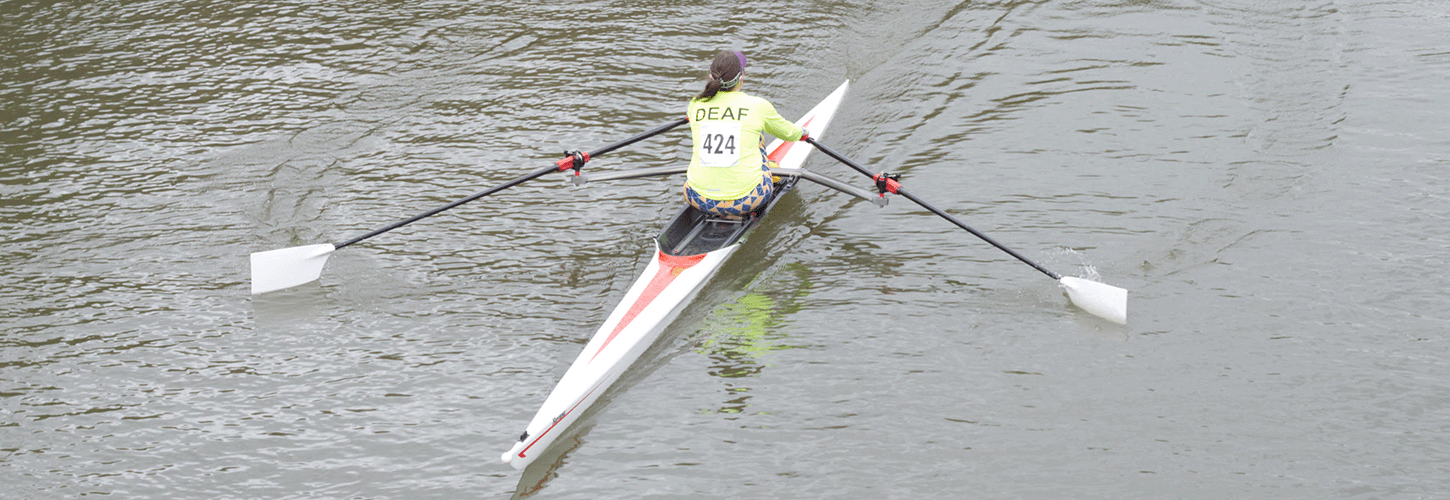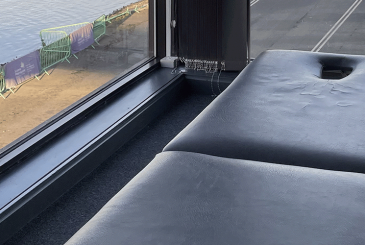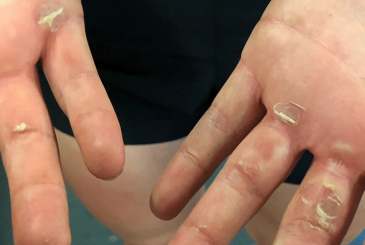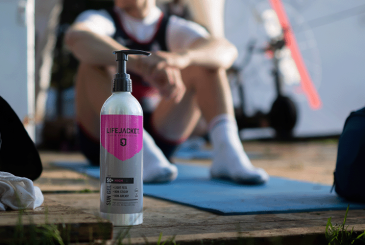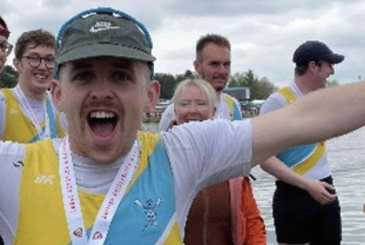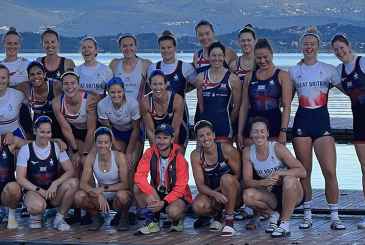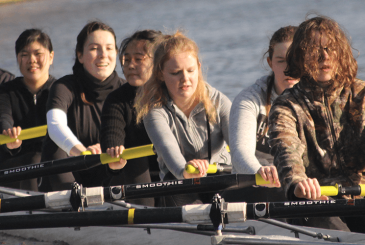Approximately 12 million people in the UK experience some form of hearing impairment, including age-related hearing loss and conditions such as tinnitus. Zoe Gullen finds out how to ensure that rowing is safe and enjoyable for those who are deaf or hard of hearing (DHH).
Athlete-coach communication
Clear and respectful communication is key. Working together, athletes and coaches should start by outlining and discuss their needs and concerns. Coaches should be guided by the athlete and, without singling them out, ensure that their specific needs are being met and that they are engaged in the session. Then, working with the athlete and the wider squad or club, work out what adaptations are required to ensure a positive experience for everyone.
Establish how the athlete prefers to communicate, and how to do so effectively. For example, for lip-reading, make sure that the athlete has a clear view of your face and speak directly to them, without speaking too slowly or exaggerating lip movements. Also consider when best to communicate. Heather Farmbrough, a masters sculler at Tideway Scullers School, says, ‘I lost about 30% of the hearing in my left ear due to a brain tumour. The prevailing stream conditions on the Tideway are the tide running out. This means that the coach is on my left side, so I often can’t hear them properly for at least half of the outing, especially if it’s windy or there are planes or other boats around.’
Have a clear written outing plan, setting out the objectives for the session. A whiteboard can be useful for introducing new terms or calls, as is using the erg to demonstrate or practise technical points before going afloat.
On the water
When on the water, ensure that athletes have a clear view of the coach so they can lip-read or see physical demonstrations of coaching points. Keep explanations simple and to a minimum, leaving more in-depth analysis and debriefs for when you are off the water.
Also be aware of background noise: cut the launch engine before speaking to the crew, and when back on land do video analysis on mute, to avoid picking up the sound of the launch engine.
Hearing technology
Hearing aids are usually water-resistant, so may withstand some splashing or getting sweaty in the gym or erg, but they are not waterproof. Check the device’s ingress protection (IP) rating, which will determine the degree of protection: IP68 is the highest.
Kailey Firmin, a rower and coach at Pengwern BC, who is profoundly deaf, points out, ‘Hearing equipment is expensive and needed for everyday life. If a rower has any hearing technology, don’t assume they will, or should, take it on the water.’
The risks may well outweigh the benefits anyway. Vicky Sixsmith, another masters sculler at TSS, says, ‘I used to wear my hearing aids when rowing but don’t any more since I lost one in the river. It obviously wasn’t in properly… An expensive mistake!’ She adds, ‘To be quite honest, I don’t find it much of a problem as my particular issue is tinnitus and hearing people in enclosed spaces. It’s more of a problem hearing friends over coffee and cake after the outing!’
Another point to remember is that hearing technology, including cochlear implants, is designed to work at close range, so it may not be effective during an outing.
Tips for crewmates
Decide on the optimum arrangement for the crew, and how to communicate within the boat. Kailey says, ‘As the only deaf crew member I find that coxless boats work best for me, and I find being in the bow seat best as I am easily able to follow and I have the control so don’t need to worry about hearing.’
Basic hand signals, such as stop and go, or taking strokes to get straight before a piece, can be helpful, as simple and discreet non-verbal communication to assist, or passing on instructions from the cox if required.
Also decide on a set of calls that everyone understands. Appoint one person to deliver them and make sure they do so clearly, especially if more than one crew member has difficulty hearing. Vicky says, ‘There are certain people whose voice is clear and others who speak softly. I always ask the bow steerer to speak up.’ Think about giving clear, defined – and short – instructions, rather than just speaking.
Avoid discussion on the water: as with coaching, save the debrief for when you are back on dry land and everyone can be included.
Tips for coxes
Again, use a set of predetermined calls so everyone knows what to expect. Make sure they are delivered clearly, with the words well spaced out (good advice whoever you’re coxing). Limiting your calls to commands, rather than coaching, will help these essential communications stand out.
Give the crew time to respond to calls, particularly for manouevres such as turning or coming in to land. Be alert to potential hazards and try to anticipate problems, so the crew have time to respond.
Make sure that you have charged your coxbox fully charged and that it’s at an appropriate volume, with the microphone picking up your voice clearly and consistently. Make periodic checks of the speaker system and wiring to make sure they are in good condition, to avoid crackling. A microphone cover could reduce interference on windy days. Athletes should also check that they are not covering the speakers with kit or wellies!
Single sculling
In some situations, DHH single scullers may prefer to be accompanied by a coach or other scullers. If venturing out solo, make sure you know the navigation rules and possible hazards. As for any outing, assess the risks and keep a good look-out.
If other clubs or sports use same stretch of water, you may consider making yourself more visible. Kailey says, ‘I row in a hi-viz top that says DEAF on the back, so other people who don’t know me are aware.’
Heather says, ‘I look around a lot and use my eyes more because I can’t rely on my hearing. I am conscious that it can be difficult for other people to hear as well.’
Racing
Think about visual cues, particularly at the start of a race. Read the Rules of Racing to refresh your knowledge of the start procedure and umpire’s flags. If possible go as a crew to watch a few starts and to find out how that particular regatta does them. Is there a traffic-light system, as at some multi-lane races, or a starter up on a tower as at Masters Champs?
Walk the course to identify landmarks, and tailor the race plan and calls to them.
Inform the event by adding information for the crew on BROE and also by e-mail, so they are aware and can work with DHH competitors. When Kailey raced her single at Gloucester Head, she had a very positive experience thanks to support from the organisers. ‘When rowing to the start, another sculler made me aware of anything that was being shouted from the bank,’ she explains. ‘I also had bank support at the start, where a lady was kindly using sign language to help me. It really was a lovely experience as I try very hard not to make anyone’s day more stressful and I know how much effort goes into making all these events run smoothly.’
Conclusion
One rower, who was born profoundly deaf, summarises what clubs, coaches and crewmates need to do when working with DHH athletes: ‘Consider solutions and work with the rower, rather than focus on the problem.’
So, if there’s a DHH rower at your club, be open-minded and build on what they can do, rather than what they can’t. Together, you should to be able to create a supportive and empowering environment.
Useful resources
- UK Deaf Sport has advice on how to be accessible as well as tips and hints for coaching DHH athletes.
- UK Coaching provides advice about Coaching Deaf and Hard of Hearing People.
- UK Deaf Sport also lists some British Sign Language signs relevant to sport, all there are norowing-specific ones (yet).
- UK Deaf Sport has recently worked with E-Coaching to produce a course on Deaf People’s Inclusion in Sport (fee applies).


